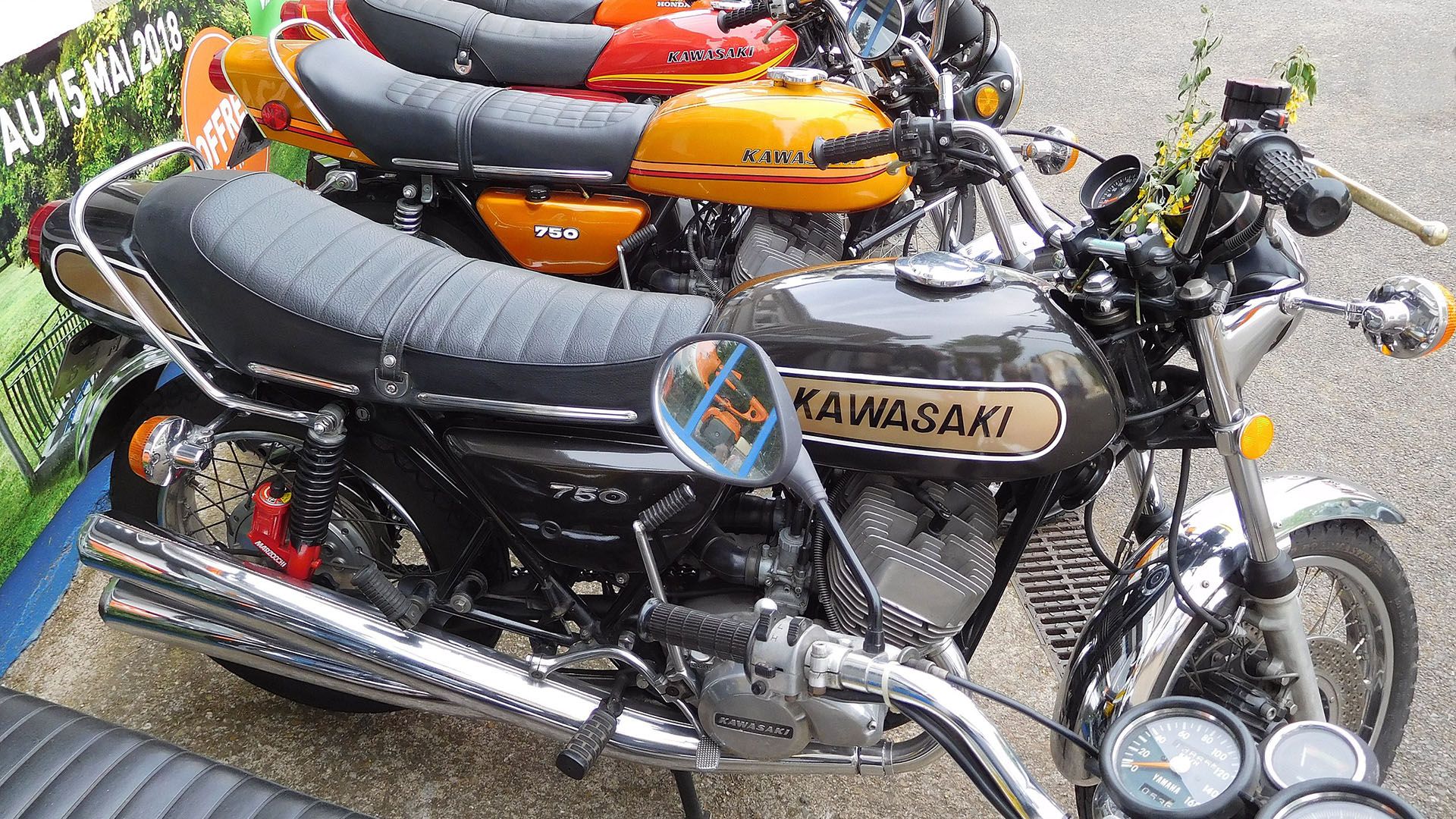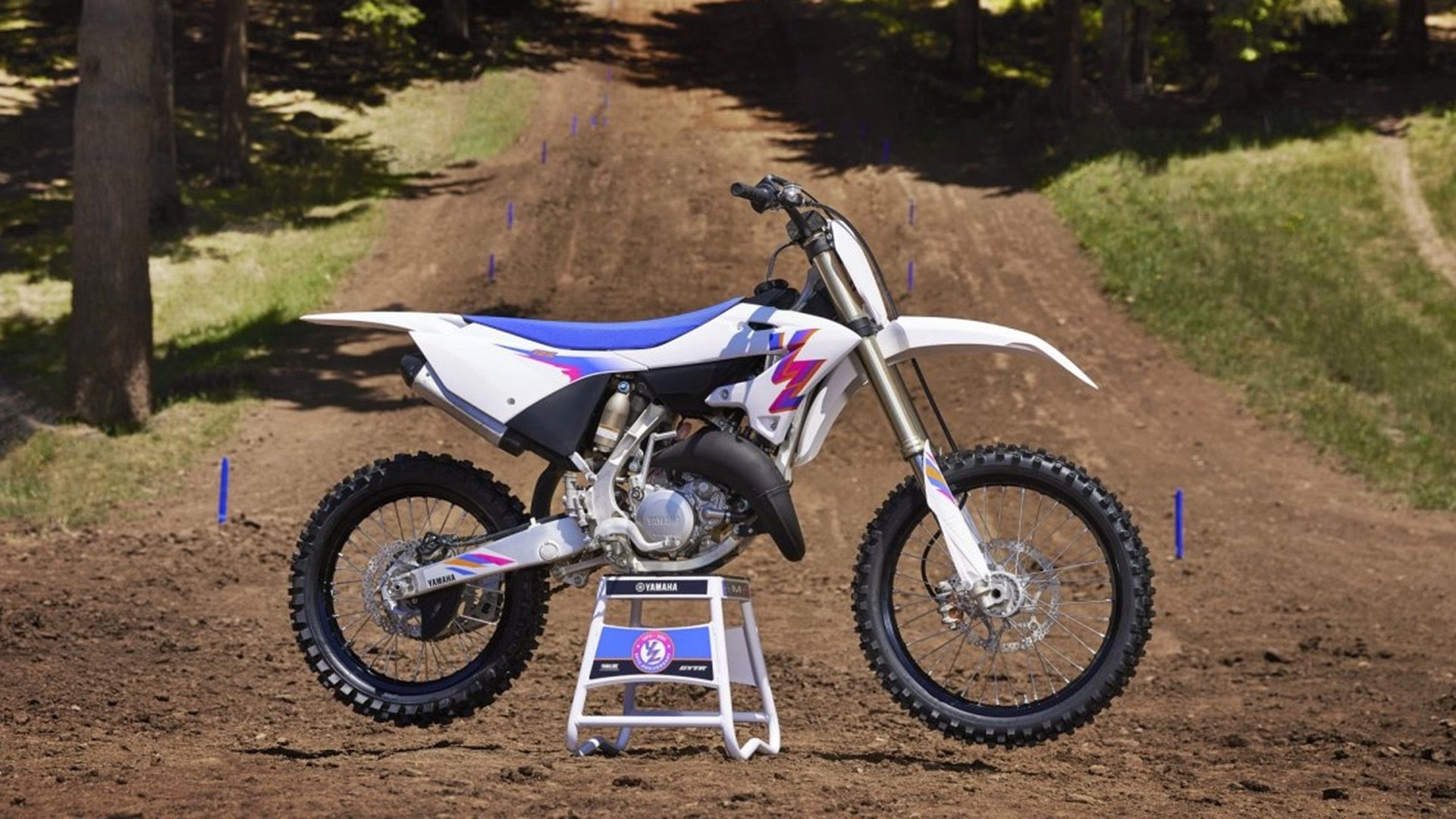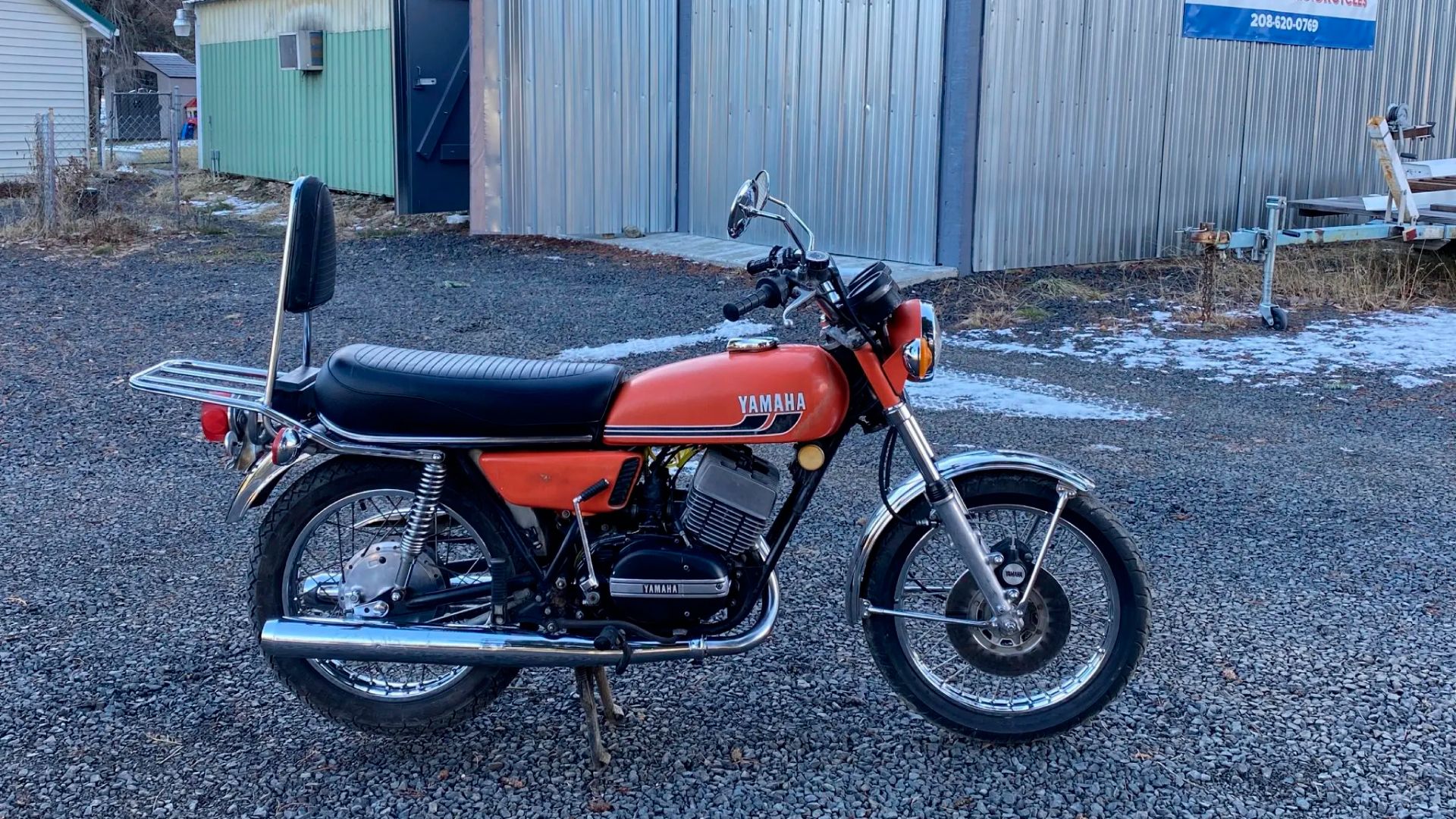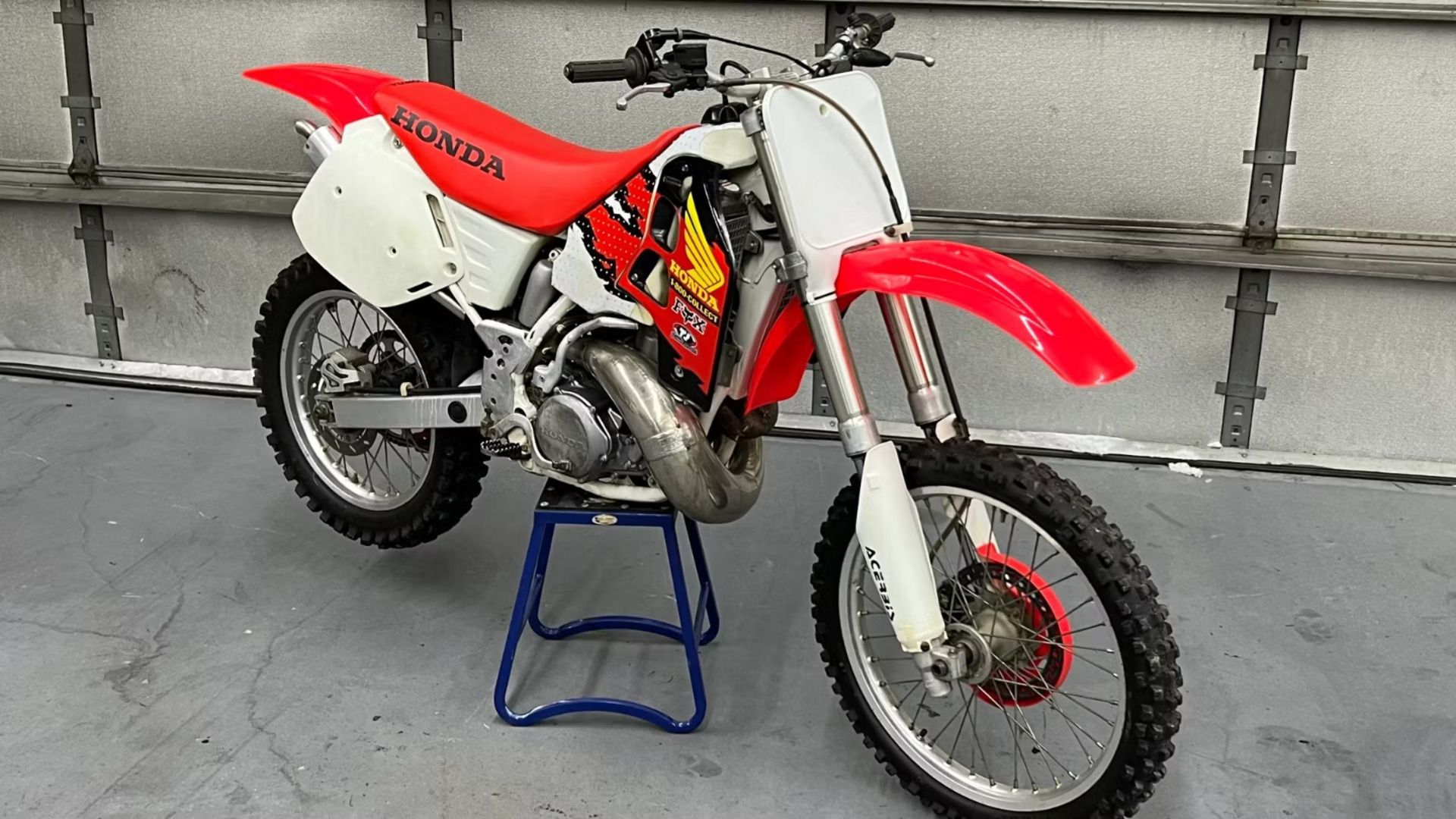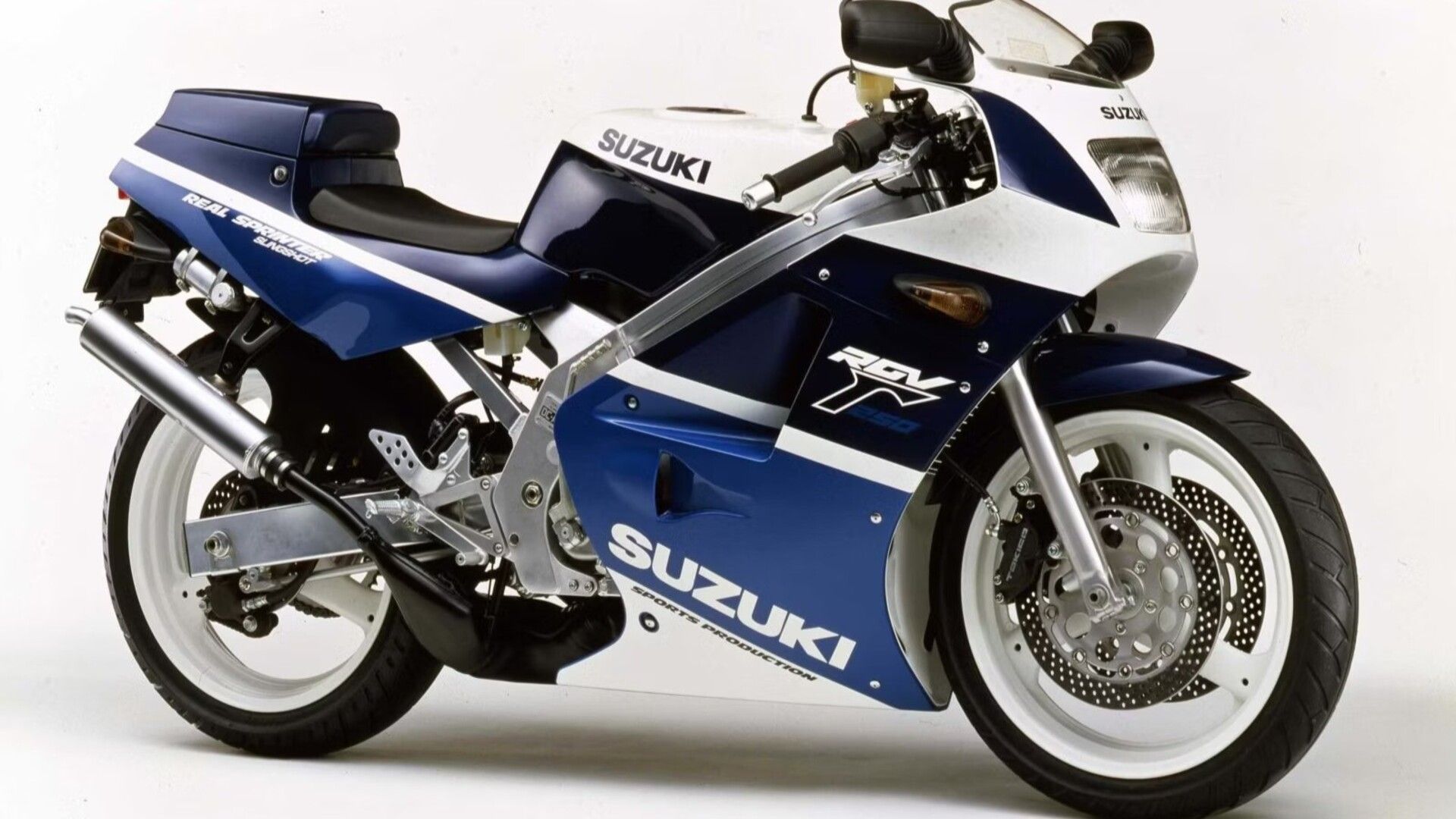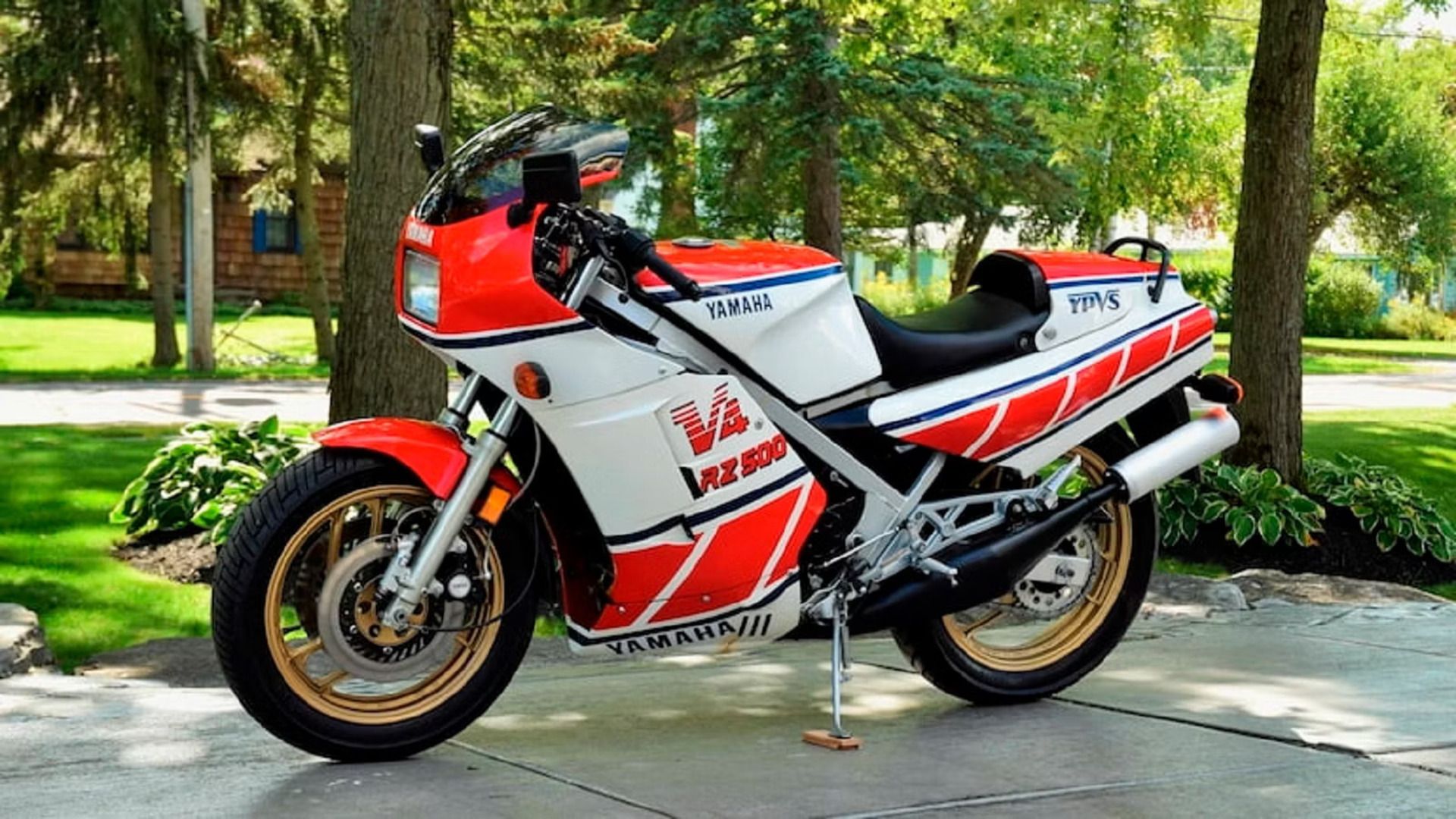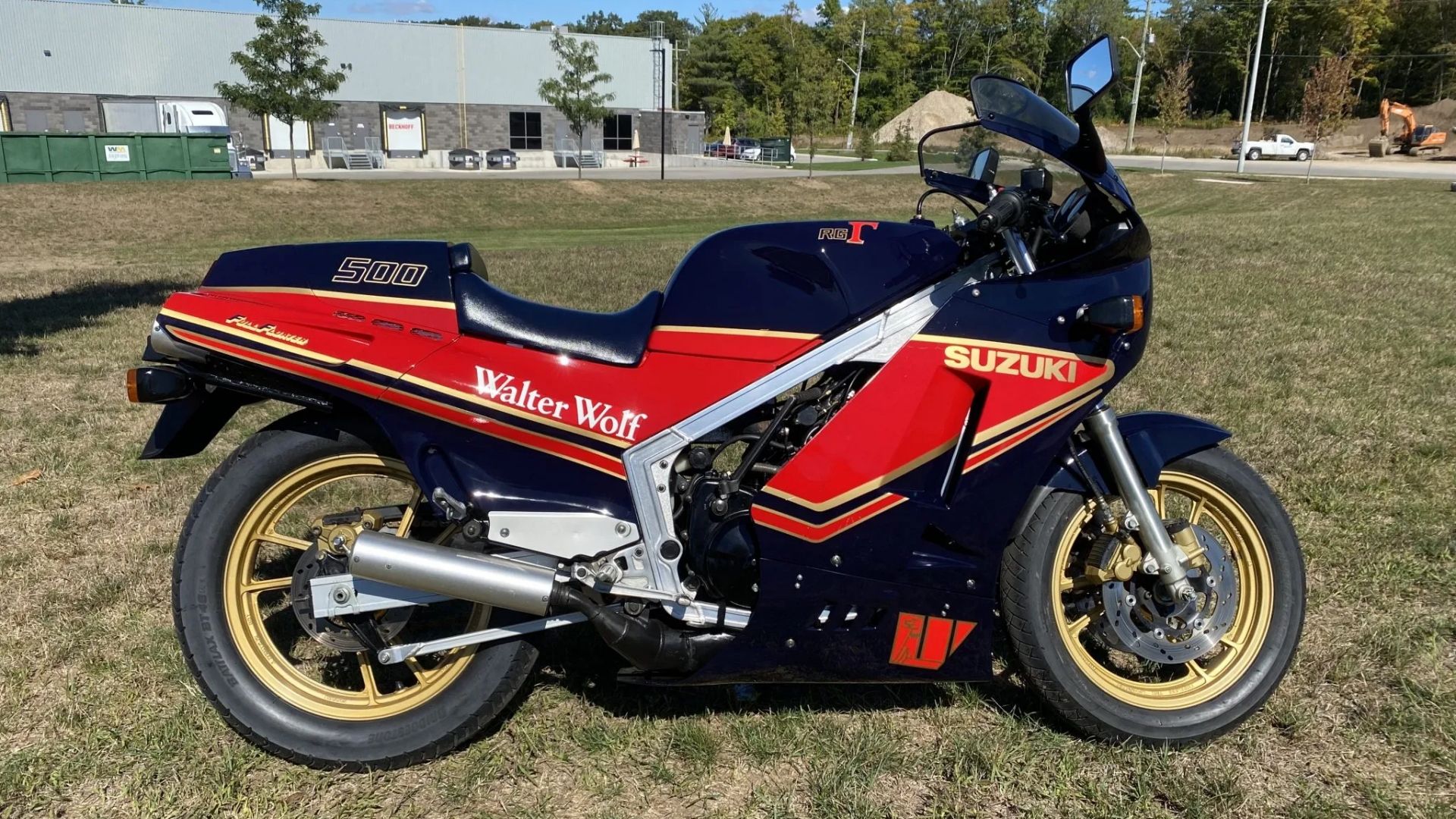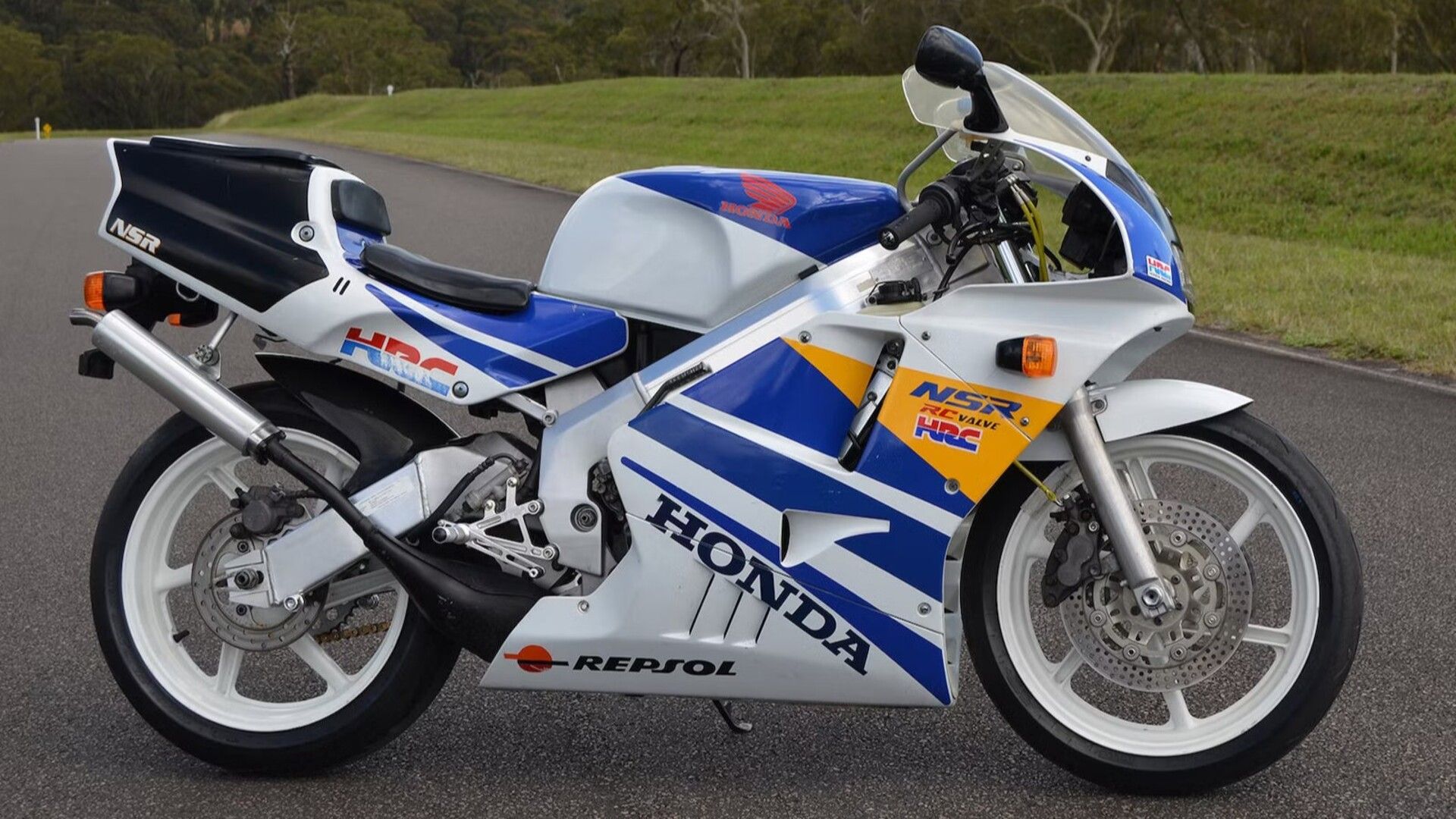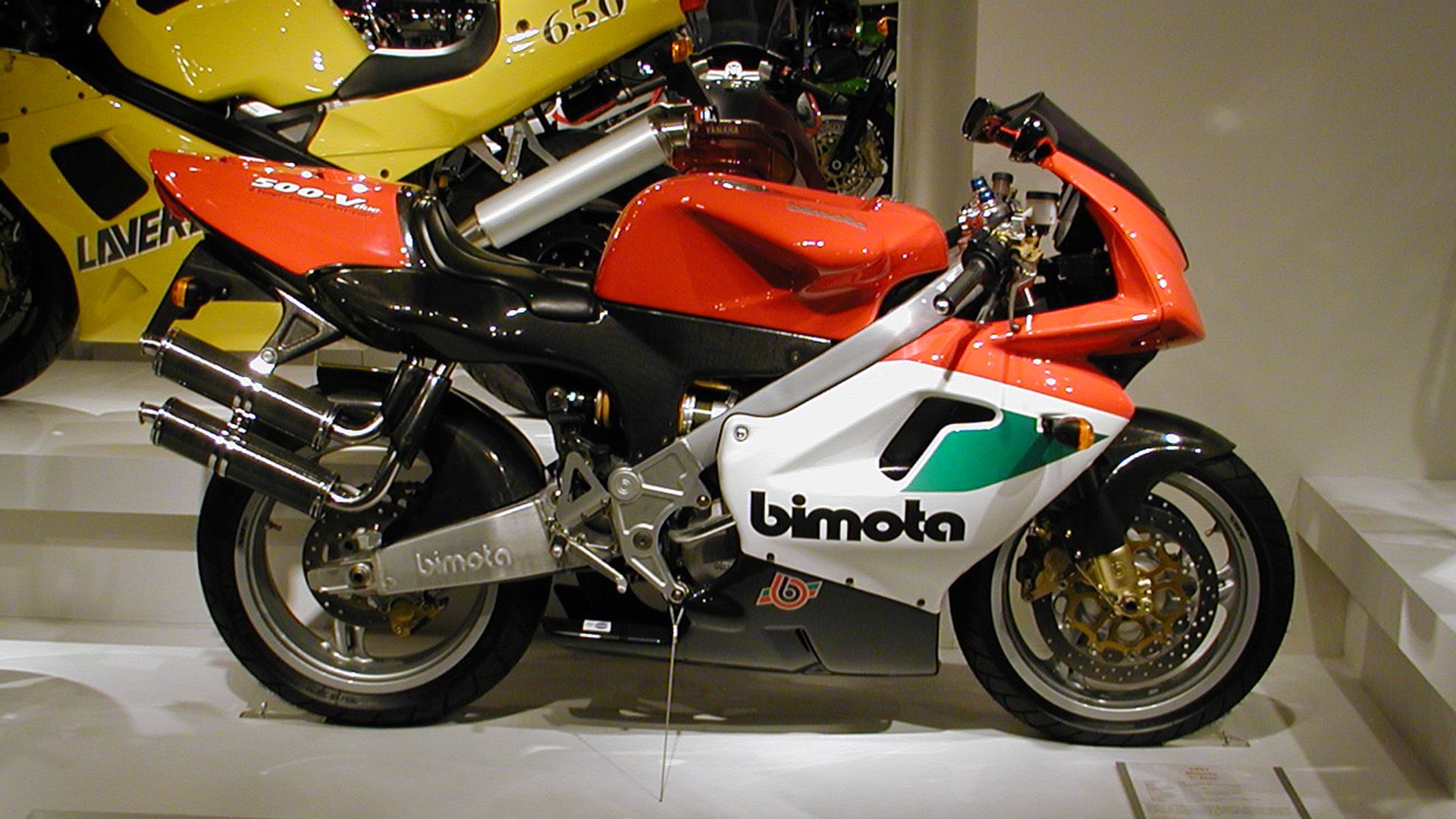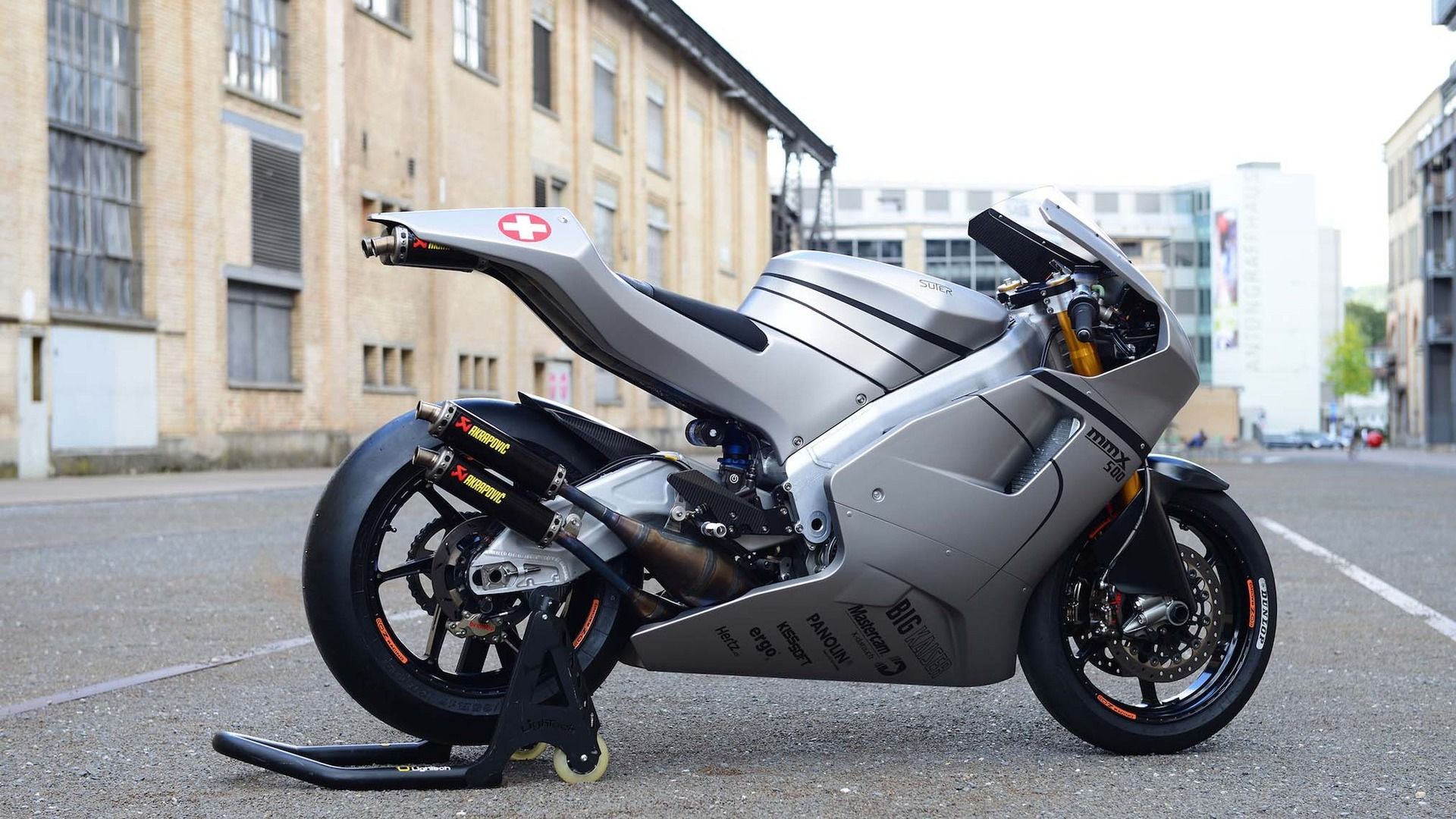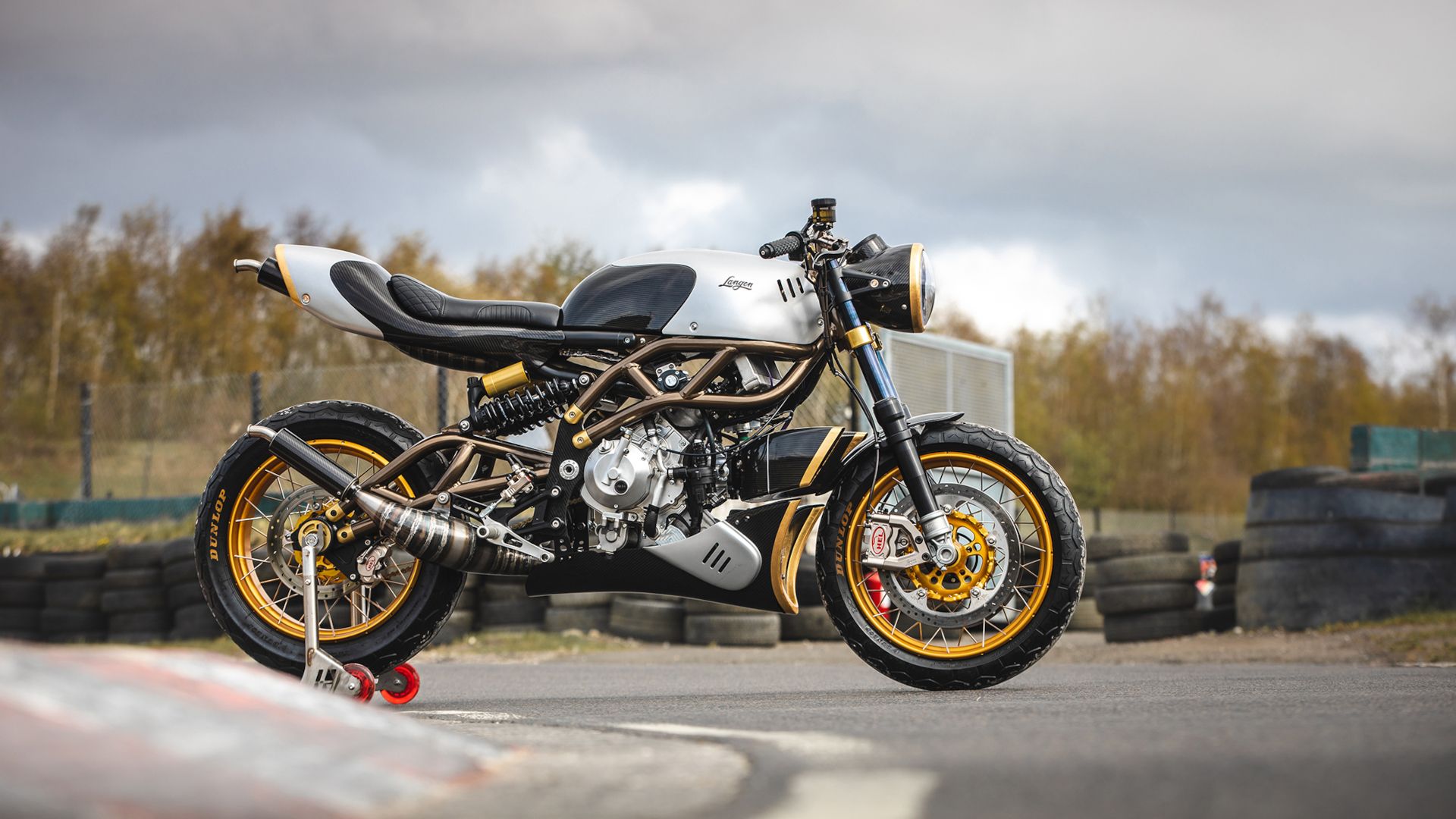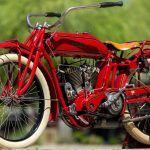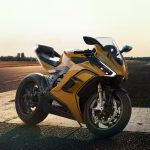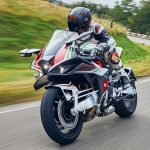When the Japanese introduced two-stroke technology to motorcycle Grand Prix racing in the early 1960s, few had an idea how dominant the tech would become in the following forty years. In road bikes, as well, two-strokes appeared to be the perfect engine: light, simple, cheap to manufacture, and much more powerful than four-stroke counterparts. But there was one problem for a world increasingly worried about pollution; two-strokes are very ‘dirty’ engines, burning their lubricating oil along with the petrol, leading to extremely poor emissions.
Modern fuel injection systems have addressed this problem successfully, and thankfully, there are still a handful of two-stroke motorcycles still in production today. Though most of these are offered in dual sport trims by accomplished brands like Yamaha and KTM, it appears it might be too late for a new breed of screaming two-stroke road bikes to start appearing in showrooms. As a result, we’ll have to focus on motorcycles from the past in this story. With that pre-requisite out of the way, let’s dive in.
UPDATE: 2024/03/27 14:47 EST BY UTKARSH SOOD
While most two-strokes have been off the shelves for a long time, these iconic bikes are still sought after by both collectors and enthusiasts. Since we want our readers to know more about these magnificent machines, we have updated this list with detailed specs along with special features for each bike. We have also added new entries to ensure all the content remains relevant and informative.
In order to give you the most up-to-date information possible, the data used to complete this article was sourced directly from the manufacturer’s website alongside authoritative sites. The models are listed according to their year released, from the earliest to the latest.
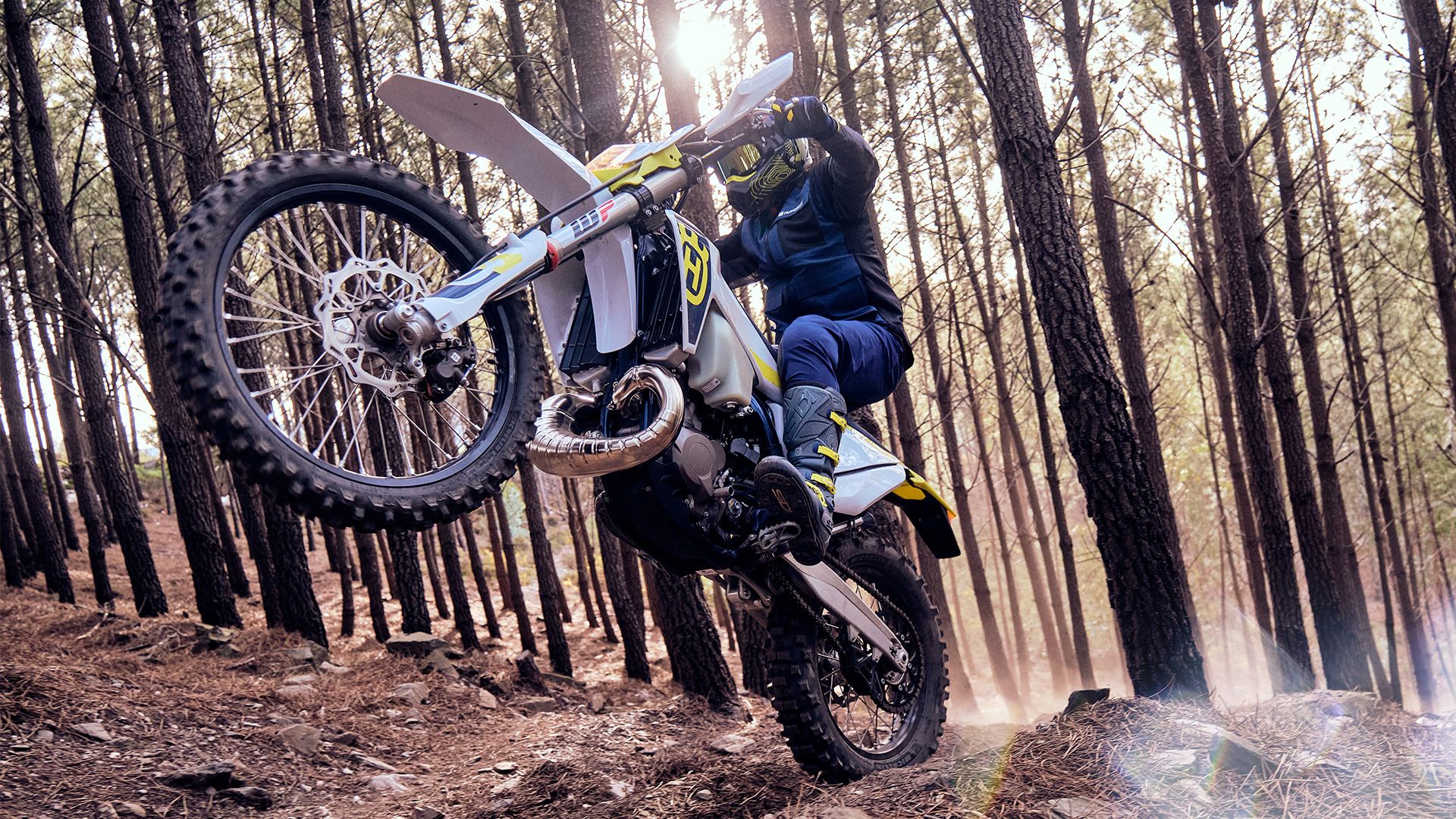
Here’s Why Two-Stroke Motorcycles Are Still Relevant
The noisy two-strokes of days gone by are still around, and are still the perfect weapon for off-road riding
12 Kawasaki H2 Mach lV
Year Launched: 1971
As if the 1969 Kawasaki H1 Mach III 500cc model wasn’t mad enough (one road test claimed it was only safe when parked with the engine off), Kawasaki then turned up the insanity dial with the 1971 H2 Mach lV. The bike carried a three-cylinder, 750cc two-stroke engine, developing 74 horsepower while weighing 452 pounds. If the handling was better than the ‘Widow Maker’ Mach lll, it was still a handful in anything but a straight line. And even doing that, it was hard to keep the front wheel on the ground.
Performance Specifications
|
Displacement |
748cc |
|
Engine Type |
Air-cooled Two-stroke inline-three |
|
Power |
74 horsepower |
|
Torque |
57 pound-feet |
|
Weight |
423 pounds (dry) |
|
Transmission |
5-speed |
|
Top Speed |
120 MPH |
Arriving before the seminal Z1 900, it was yet another nail in the coffin for the British motorcycle industry, which was still building parallel twin-engined roadsters, as it had been doing for the past 20 years. The writing was on the wall, and it was bikes such as the H2 Mach lV that were doing the writing.
Special Feature:
- Triple-Cylinder Power: The H2 Mach IV is renowned for its triple-cylinder two-stroke engine, delivering an impressive 74 horsepower in the 748cc variant, setting a benchmark for power and speed.
11 Yamaha TZ750
Year Launched: 1974
If two-stroke engines had four cylinders, they tended to be of V4 or square four configuration. When Yamaha unveiled its TZ750, it was unique in having an inline four-cylinder two-stroke engine, producing 89 horsepower initially in 1974, which rose to 120 horsepower by 1979. In the 1970s, Formula 750 racing was hugely popular, and it was the preserve of fire-breathing two-stroke engine bikes from Kawasaki, Suzuki, and Yamaha.
Performance Specifications
|
Displacement |
694cc (A); 747cc (B to F) |
|
Engine Type |
Water-cooled Two-stroke inline-four |
|
Power |
89 horsepower (A to C); 120 horsepower (D to F) |
|
Torque |
55 pound-feet |
|
Weight |
346 pounds (dry for A to C); 335 pounds (dry for D to F) |
|
Transmission |
6-speed |
|
Top Speed |
186 MPH |
What set Yamaha’s approach apart from its competitors was that they developed the TZ750 specifically for the series, and it was a brutal beast. With the top speed lingering in the 180s, it’s fast even by today’s standards. The bike ate through the racing tires of the time and tied itself in knots even on the straights when the throttle was opened. Famously, Kenny Roberts turned one into a flat track racer and won the 1975 Indy Mile event. It scared him so much that he himself was instrumental in getting the bike banned!
Special Features:
- Dominant Racing Heritage: The TZ750 is celebrated for its dominance in the racing scene, particularly in the legendary Daytona 200, where it showcased its exceptional speed and reliability.
- Four-Cylinder Performance: With a 750cc four-cylinder engine, the TZ 750 offered a perfect balance of power and agility, making it a favorite among professional racers.
10 Yamaha YZ250
Year Launched: 1974
The Yamaha YZ250 is one of those rare bikes on this list that continues to be in production nearly 50 years after it was originally released. The 249cc engine of the newest YZ250 is lightweight and small, producing a broad powerband. This engine is now more efficient than ever thanks to cutting-edge technologies like the digital CDI and the Power Valve System (YPVS).
Performance Specifications
|
Displacement |
249cc |
|
Engine Type |
Liquid-cooled, single-cylinder, two-stroke |
|
Power |
39 horsepower |
|
Torque |
18 pound-feet |
|
Weight |
227 pounds (wet) |
|
Transmission |
5-speed |
|
Top Speed |
75 MPH |
But there is more to it than just its motor. The YZ250 has exceptional handling due to its lightweight aluminum frame and swingarm, and its front and rear hydraulic disc brakes offer outstanding control and stopping power. Both the 48 mm inverted KYB front fork and the KYB rear shock with low-friction Kashima Coat internals are fully adjustable. Meaning, it remains one of the most fun-to-ride dual sports to own in 2024.
Special Feature:
- Adjustable Tuning: You can fine-tune the YZ250’s performance with features such as the adjustable handlebar mounts, adjustable compression and rebound damping on the suspension, and adjustable exhaust valve timing.
9 Yamaha RD350LC
Year Launched: 1980
Yamaha took lessons learned with the TZ750 and put them to much better use in the RD350LC, including water-cooling and a monoshock rear end. Yamaha turned to its European HQ for help in designing and configuring the bike, which meant that it was already at an advantage when it went on sale. It subsequently became a huge success, particularly in England.
Performance Specifications
|
Displacement |
347cc |
|
Engine Type |
Liquid-cooled Two-stroke parallel-twin |
|
Power |
47 horsepower |
|
Torque |
29.7 pound-feet |
|
Weight |
328 pounds (wet) |
|
Transmission |
6-speed |
|
Top Speed |
114 MPH |
It was fast enough to take on 750cc four-stroke inline fours. The handling had come a long way from older models and its profile was helped by a massively successful one-make racing series. It was even promoted by none other than Barry Sheene himself. It won Bike of the Year twice in the UK and was that country’s most stolen bike! Legendary and collectible.
Special Features:
- Iconic LC (Liquid Cooled) Design: The RD350LC introduced liquid cooling to the RD series, enhancing performance and durability, making it a standout choice among two-stroke enthusiasts.
- Lightweight and Nimble: Weighing in at just over 300 pounds, the RD350LC’s lightweight chassis and agile handling contributed to its popularity, providing riders with a thrilling and responsive riding experience.
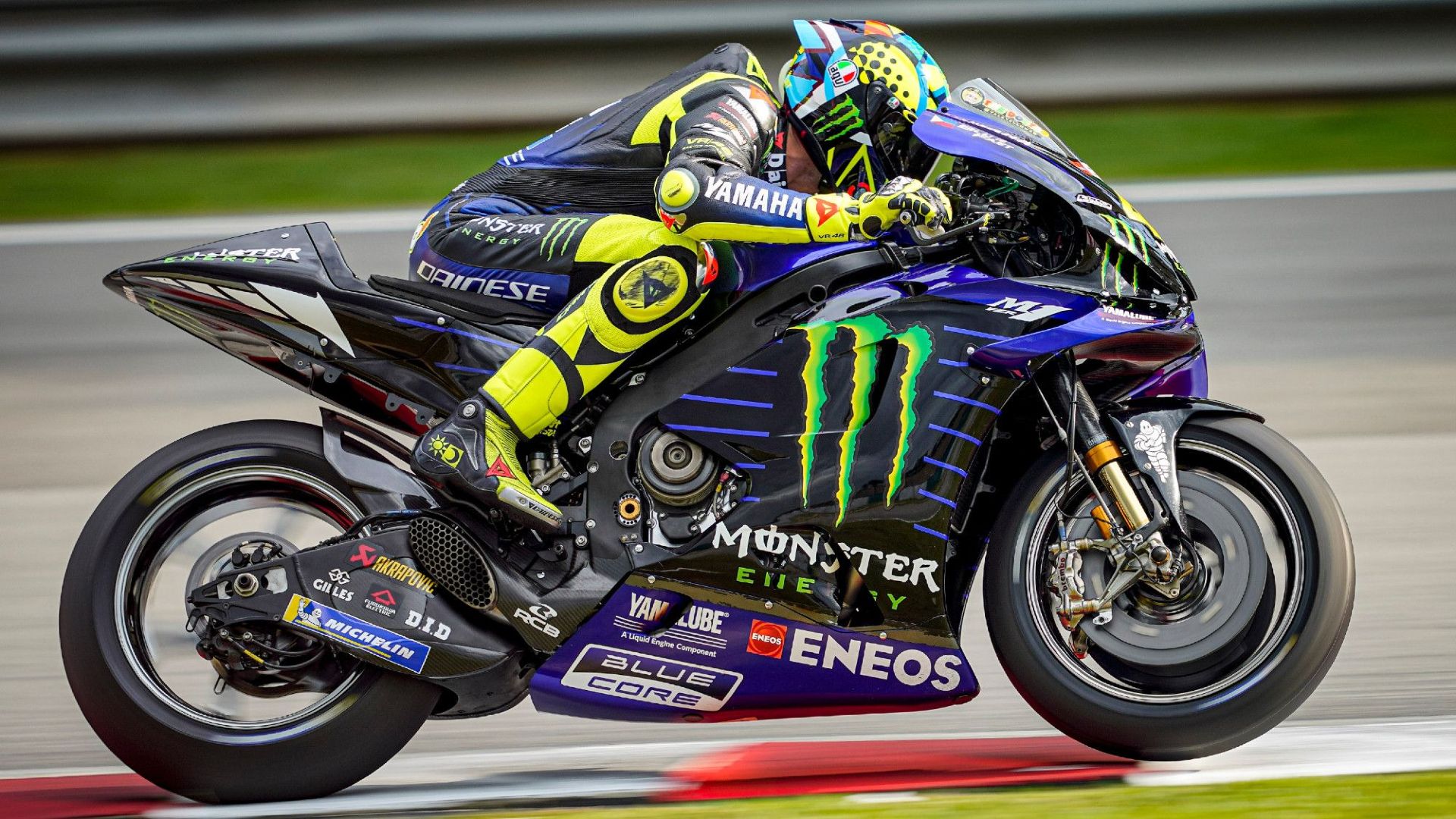
10 Most Successful GP Bikes
Through seasons both predictable and unpredictable, these are the most successful MotoGP bikes
8 Honda CR500R
Year Launched: 1984
Off-road motorcycling has always been where you’ll find the most two-stroke engines. Even today. It’s not hard to see why: light heft and huge power are the perfect ingredients for success. When manufacturers started bolting 500cc two-stroke singles into their MX and Enduro bikes, fireworks were guaranteed and Honda’s 1985 CR500 was one of the most incendiary.
Performance Specifications
|
Displacement |
491cc |
|
Engine Type |
Liquid-cooled Two-stroke single-cylinder |
|
Power |
64.6 horsepower |
|
Torque |
53.3 pound-feet |
|
Weight |
238 pounds (wet) |
|
Transmission |
5-speed |
|
Top Speed |
Approximately 90 MPH |
Almost 65 horsepower on a bike weighing 238 pounds took some taming, but it also took some beating, winning the 500cc MX class eight years in a row. Honda had resisted two-stroke technology for decades but typically, when it relented, the result was total domination.
Special Feature:
- Incredible power-to-weight ratio: Weighing in at just over 200 pounds, the CR500 was one of the fastest dirt bikes of its time.
7 Suzuki RGV250
Year Launched: 1988
In the late 1980s, manufacturers – and customers – were still aware of the advantages of a super-lightweight, small-displacement sports bike. And who could blame them when the result was bikes such as the RGV250? The 249cc, two-stroke V-Twin pushed out 60 horsepower, which was plenty on a package weighing 282 pounds dry!
Performance Specifications
|
Displacement |
249cc |
|
Engine Type |
Liquid-cooled Two-stroke 90° V-Twin |
|
Power |
61 horsepower |
|
Torque |
30 pound-feet |
|
Weight |
282 pounds (dry) |
|
Transmission |
6-speed |
|
Top Speed |
125 MPH |
The power band was narrow – between 8,000 and 11,000rpm – which made it tricky, but the chassis more than made up for it and a well-ridden RGV250 could run rings around 750cc and 1000cc sports bikes on track. Sadly, however, the age of the two-stroke road bike was coming to an end and a new breed of 400cc four-strokes were more reliable and, crucially, were easier to ride.
Special Features:
- Race-Derived Technology: The RGV250 incorporates technology derived from Suzuki’s Grand Prix racing machines, offering riders a taste of high-performance features in a production two-stroke motorcycle.
- Lightweight Aluminum Frame: The aluminum frame of the RGV250 contributed to its agility and responsiveness, setting it apart as a precision instrument for riders seeking a thrilling and dynamic experience.
6 Yamaha RD500LC
Year Launched: 1984
You might think that, given the name, this was merely a 500cc version of the successful RD350LC. Think again. In the 1980s, manufacturers were keen to capitalize on race success by offering road-legal versions of their Grand Prix bikes to the public. Following Suzuki’s RG500 and Honda’s NSR400, the Yamaha RD500LC had a 500cc two-stroke V4 engine bolted into a lightweight frame and bodywork.
Performance Specifications
|
Displacement |
499cc |
|
Engine Type |
Liquid-cooled Two-stroke 50° V4 |
|
Power |
88 horsepower |
|
Torque |
48 pound-feet |
|
Weight |
436.5 pounds (wet) |
|
Transmission |
6-speed |
|
Top Speed |
148 MPH |
The engine was seriously de-tuned from the full racing bikes but still, 88 peaky two-stroke horsepower was more than enough to turn the hair gray, even if the Japanese had, by this time, got a handle on building frames out of more than drinking straw-thickness steel tubes.
Special Features:
- V4 Powerplant: The RD500LC introduced a V4 engine configuration, bringing a unique and powerful character to the two-stroke category, and setting it apart as a technological marvel in its era.
- Aluminum Frame: Featuring an aluminum frame, the RD500LC maintains a lightweight profile, ensuring a perfect balance between power and handling, making it a sought-after choice among enthusiasts.
5 Suzuki RG500
Year Launched: 1985
There was a time when anyone could buy a 500cc Grand Prix bike from the factory and go racing with the stars of the day: can you imagine doing that today? The Suzuki RG500 was also available as a road-legal bike, complete with a 95 horsepower, four-cylinder, twin crank square four two-stroke engine.
Performance Specifications
|
Displacement |
498cc |
|
Engine Type |
Liquid-cooled Two-stroke Square-four |
|
Power |
83 horsepower |
|
Torque |
53 pound-feet |
|
Weight |
386 pounds (wet) |
|
Transmission |
6-speed |
|
Top Speed |
147 MPH |
The bike was light and fast, as long as you kept the engine on the boil above 5,000rpm, below which there was little power. Above it, however, and you needed to hang on: not many bikes of the time, irrespective of engine size, could match the RG500 for acceleration. At a time of stodgy and heavy sports bikes, this really was a Grand Prix bike for the road.
Special Features:
- Grand Prix Pedigree: The RG500, derived from Suzuki’s successful Grand Prix racing bikes, featured a square-four engine layout, showcasing Suzuki’s commitment to bringing racing technology to the streets.
- Advanced Suspension: Equipped with advanced suspension components (for the time), the RG500 delivered exceptional handling, making it a favorite among riders who appreciated a combination of power and precision.
4 Honda NSR250
Year Launched: 1985
The 1980s were a great time for race replicas, with models from Suzuki, Yamaha, Kawasaki and this one from Honda. With ‘only’ 45 horsepower and a weight of 328 pounds, it might not have sounded like the fastest road bike, but it was certainly fast enough to worry the insurance companies.
Performance Specifications
|
Displacement |
249cc |
|
Engine Type |
Liquid-cooled Two-stroke 90° V-twin |
|
Power |
45 horsepower |
|
Torque |
24 pound-feet |
|
Weight |
310.8 pounds (wet) |
|
Transmission |
6-speed |
|
Top Speed |
130 MPH |
The thing that really set the pulses racing of every red-blooded boy who dreamed of being a Grand Prix rider was the fact that the NSR250 looked exactly like the bikes that were winning in the 250cc Grand Prix world championship, complete with Rothman’s sponsorship paint job and a single-sided swing arm. The good old days…
Special Features:
- Pro-Arm Rear Suspension: The NSR250 showcased Honda’s innovation with its Pro-Arm single-sided swingarm rear suspension, enhancing stability and improving rear wheel access for swift tire changes.
- PGM-III Technology: The NSR250 incorporates Honda’s advanced Programmed Gearshift and Ignition (PGM-III) technology, optimizing power delivery and ensuring a smooth and responsive riding experience.
3 Bimota V Due Evolution
Year Launched: 1997
Bimota’s limited edition Evoluzione remains to be highly sought after today. But sadly, it did more harm than good to Bimota’s reputation in the late 1990s, forcing them to briefly shut down as a result of the losses accrued. It had the first (and only) 500cc, 90-degree V-twin two-stroke engine ever made by Bimota.
Performance Specifications
|
Displacement |
500cc |
|
Engine Type |
Liquid-cooled Two-stroke 90-degree V-twin |
|
Power |
105 horsepower |
|
Torque |
66 pound-feet |
|
Weight |
388 pounds (wet) |
|
Transmission |
6-speed |
|
Top Speed |
165 MPH |
The truth is that it had a lot of problems, including oil leaks, irregular transmission of power, and engine seizures. Bimota followed it up with 26 limited racers which were not permitted for use on public roads until the Evoluzione Corsa and the renowned Evoluzione was introduced in 2001. Even though it enjoys a collectible status today, the V Due Evolution will always be remembered as a terrible conclusion to a true two-stroke legend.
Special Feature:
- It had Bimota’s first and only 500cc 90-degree V-twin two-stroke engine.
2 Suter MMX 500
Year Launched: 2017
How many enthusiasts fervently wish that Grand Prix racing hadn’t abandoned two-strokes in favor of four-strokes in 2001? Even if the 125cc and 250cc classes continued with two-stroke tech for a number of years, the days of the blindingly fast two-stroke 500cc bikes were gone. But what if the two-stroke had remained the power unit of choice?
Performance Specifications
|
Displacement |
576cc |
|
Engine Type |
Liquid-cooled Two-stroke V4 with counter-rotating crank |
|
Power |
195 horsepower |
|
Torque |
Undisclosed |
|
Weight |
280 pounds (wet) |
|
Transmission |
6-speed cassette-style gearbox |
|
Top Speed |
192 MPH |
That’s what Suter asked themselves before creating the MMX 500. Suter is well known in GP circles for building some of the best chassis, but in 2017, they decided to go the whole hog and build a complete bike, albeit not for racing. The engine was a 576cc, twin-crank V4 developing a claimed 195 horsepower. Weight was 280 pounds, so we’ll leave it to you to imagine the performance if you can!
Special Features:
- Limited Production Supremacy: The Suter MMX 500 is a limited-production two-stroke marvel, featuring a 576cc V4 engine, providing riders with an exclusive, high-performance experience.
- Carbon Fiber Construction: With a chassis crafted from lightweight carbon fiber, the MMX 500 combines cutting-edge materials with a powerful engine, delivering extraordinary performance.
1 Langen Two-Stroke
Year Launched: 2022
Today, the only two strokes to be found are fitted to MX and Enduro bikes. Although not quite. In a small workshop in Northern England, a firm called Langen is hand-building utterly beautiful and exclusive motorcycles powered by a 250cc V-Twin two-stroke engine. Pushing out 75 horsepower while weighing 251 pounds gives a power-to-weight ratio of 660 horsepower per tonne!
Performance Specifications
|
Displacement |
249.5cc |
|
Engine Type |
Liquid-cooled 90° V-Twin Two-Stroke |
|
Power |
76 horsepower |
|
Torque |
33 pound-feet |
|
Weight |
265 pounds (wet) |
|
Transmission |
6-speed |
|
Top Speed |
140 MPH |
It’s bristling with top-end suspension and braking components and lightweight carbon fiber, aluminum, and titanium construction. While we doubt this is the beginning of a resurgence of two-stroke motorcycles from the major manufacturers, it does rather set the heart racing!
Special Features:
- Modern Classic Design: The Langen Two-Stroke blends classic styling with modern engineering, creating a unique aesthetic that pays homage to the golden era of two-stroke motorcycles.
- Titanium Exhaust System: Featuring a titanium exhaust system, the Langen ensures optimal performance while emitting the distinctive and iconic sound that defines two-stroke machines.
Sources: MCN and Cycle World


